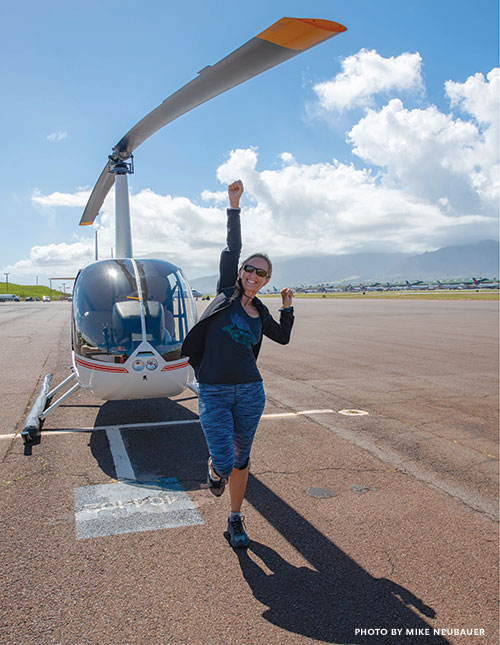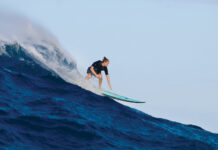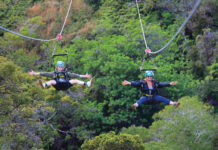
So “Take a helicopter intro lesson” has been #1 on my bucket list for a long, long time. Imagine my glee when I was assigned to do just that for Maui Nō Ka ‘Oi.
Nick Moran looks exactly like a pilot as envisioned by Central Casting, with a wide smile and steady blue-eyed gaze. We meet at the security gate near the hangar where he and wife Magen park their aircraft, and stroll over to the light and trim Robinson R44. The Morans started Go Fly Maui, the island’s only helicopter flight school, in July of 2018. They also take up photographers who want to work from the air and do things that drones can’t do.
I settle into a chair next to a pile of books and charts. A toy helicopter sits on a map of Maui, the air moving through the hangar making the wee blades turn slowly, casting tiny shadows on the paper coastline. Nick drops into a chair across from me with a dry-erase board and red marker. “Today,” he says, with an unfolding grin, “you’ll be going from zero to hero.”
“Flight schools use the Robinson R44 because it is so light and convenient,” he explains. “It was designed with just two blades so that it could be rolled into a storage space the size of an RV.” The R44 has dual controls so that Nick can support anything I want to try. Because those controls move in concert, I will also be able to feel exactly what he is doing. He leads me through the basics: the foot pedals control the tail rotor blades, which stabilize the craft; the “cyclic” (the bit that looks like a joystick) controls the aircraft’s forward, backward and lateral movement; and the “collective,” a lever down by the seat that looks like a heavy-duty parking-brake handle, controls the angle of the main rotor blades, and therefore controls lift. Our forty-five minutes of preflight training are intensely thorough and professional, touching on helicopter design and avionics math. It is a lot to take in, but flying is serious business. Nick says, “Beyond teaching the mechanics, we do training to bring up awareness and respect for the machine.”
His calculations tell us that our Velocity Never Exceed (VNE) speed for today, with doors off, will be 100 knots, and the highest we’ll go is 3,000 feet, which is peachy by me. It’s just high enough to see for miles and low enough to make out details on the ground, or in the water. For safety, “We will keep our eyes peeled for birds, drones, and air traffic,” Nick adds.





